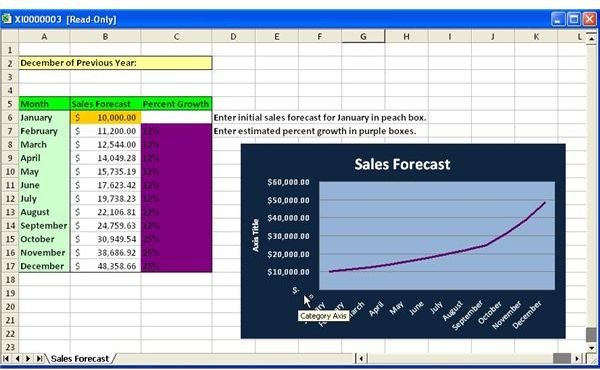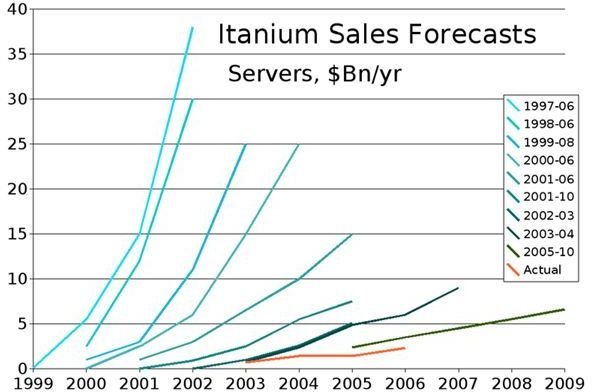How to Forecast Initial Sales for New Business Owners
What Are Sales Forecasts?
First off, sales forecasts are not the same as sales budgets or cash flow forecasting. Sales forecasts, especially initial sales outlooks, are determined by your sales and marketing plan and strategy, and play a huge part in your cash flow analysis.
Does that mean you must build a marketing plan and come up with a sales strategy before you learn how to forecast initial sales? While it’s a good idea, there are some methods you can do that will help you predict initial sales with realistic numbers, only then will that cash flow statement you need to prepare be accurate.
Sales forecasts, when complete, should show possible investors and lenders the amount of sales you predict for at least the first two years (in the real world of small business, that’s what they will ask for). Sales that are forecasted for new businesses should come with a narrative or written back up on how the forecasted numbers were determined—in other words, most people won’t just take your word for it, they want proof.
Where to Find Real Factors to Forecast Sales

Business experts will offer all sorts of formulas and figures to help you forecast sales, but to the new business owner, most of these can be confusing. You do need real factors and data to help you predict how much you expect to sell, however.
First off, include in your investment budget, the latest copy of the Consumer Confidence Index that is available from The Conference Board. A one year subscription will cost you around $500, but it can be invaluable in forecasting sales, as it is based on consumer surveys, is area specific depending on the region in the US where you live, and offers insight on what consumers expect to spend money on in the next three, six, and twelve months. A sample copy of the Consumer Confidence Index can be found in our Personal Finance Media Gallery. After you review the information it contains, you can make a decision on whether this data will be valuable to assist you in forecasting sales.
Depending upon the industry you are in (product or service), you can also purchase market share lists. For example, Aberdeen offers real consumer sales data for all sorts of products and services and RL Polk offers sales data for the automotive industry. Further, the US Government offers a free website on the US economy with regard to sales revenues, however, this website does take some time to research. Even eBay has gotten in on the game of offering sales projections through their eBay Pulse program.
Finally, hit the streets yourself and see what competitors are selling or take a trek to an area outside of your market area and visit some competitors that will be more willing to share market data with you. Really pick their brains and take notes on what’s selling, to whom, and for how much. Sit outside of the competitor’s place of business and do a head count for a day or two.
Once you’re armed with this real data and what consumers are really buying, next you’ll need to learn how to forecast initial sales with the information at hand.
Please click on Page 2 to find out how to create your initial sales forecast plan as well as tips for success.
Creating Your Initial Sales Forecast
Sales forecasting is often called a science because it’s based on real data and information to come up with expected sales during the first two years in business. In truth, sales forecasting is part science and part art. Pulling that real data together to come up with a sales forecast unique to your company is easy if you follow these steps.
- Collected Data – From exploring the industry websites provided above along with rating your competitors both inside and outside of your market area, you should be able to determine a price for your product or service, who will buy your product or service, and what factors will determine how well your product will sell; i.e., holiday seasons, summer and tourist season, slow selling months.

Create a Sales Forecast Chart** – If you’re unsure how to do this, you can find a great [Excel Sales Forecast example in our Media Gallery](https://images.brighthub.com/media/9874F6_sample-excel-sales-forecast.xlsx) created by Bright Hub writer Michele McDonough (see screenshot to the right). Every new business should be realistic on predicting sales for the first month based on data collected. Although your lender or investors may want to see a full year or two of predicted sales, once you get through at least one quarter, you can compare actuals to predicted sales and make adjustments if necessary.
- Make Your Predictions – For month one in your Excel Sales Forecast, take the price of your product or service and multiply it by the number of sales you expect to make that month. If you sell more than one product or service, break each category into its own section. New businesses, that attract curiosity, should consider an increase in sales for at least six months of around 2%-5%, depending on the marketability of your product or service. After the initial six-month period, expect the curiosity of customers to slow and keep your predicted sales constant for the following six months. For year two, it’s best to stay realistic, so never increase monthly sales more than 5%-10% and revisit sales data websites often.
- Reevaluate Your Predictions - Once you’ve been open for three to six months, you can reevaluate your sales predictions and make adjustments where necessary.
Why This Process Works: Tips for Success

Unless you already own or buy and existing business that offers true data you can analyze, you must start somewhere when learning how to forecast initial sales. In reality, even while you’re applying for a capital loan or seeking investors, it takes time to find lender and investors.
Both lenders and investors realize this, so while they analyze your business plan and background, your predicted sales forecast, as long as it’s realistic, is enough to garner interest in lenders and investors. If a lender or investor feels you are over-predicting sales, they will ask you after analyzing your data. Most likely the questions of lenders and investors (in the real world) comes to you slowly, giving you ample to adjust or reevaluate your projections. This shouldn’t worry, you, so expect it and be honest about any changes you make to your predictions.
New business owners should expect the loan process and lender interest to come slowly, which is common in the small business world. They do and will want to see at least your first three months of predictions versus actual sales along with how well you did on your cash flow forecasting and opening balance sheet to get an idea of the entire package you are submitting.
Finally, when you do present your initial sales forecasting data, make sure you include either a narrative or bullet points that explain how you came up with your predictions. If you researched competitors, state which competitors you analyzed. If you utilized a data research website, offer web links to prove your numbers.
No matter what you hear about lenders, investors or the willingness of government agencies to offer you funding for your business, in the real world, this process takes time and expect these agencies to ask many questions, including questions about how you determined your initial sales forecast.
Resources
Alan Gleeson (2010) https://articles.bplans.co.uk/marketing-a-business/how-to-forecast-sales-more-accurately/329
Image Credits:
- Itanium Sales Forecasts - https://commons.wikimedia.org/wiki/File:Itanium_Sales_Forecasts.png
- Addition Rules - https://commons.wikimedia.org/wiki/File:AdditionRules.svg
- Screenshot Excel Sales Forecast Template - https://images.brighthub.com/media/9874F6_sample-excel-sales-forecast.xlsx
- Bankders Hall West - https://commons.wikimedia.org/wiki/File:Bankers_hall_west.jpg
